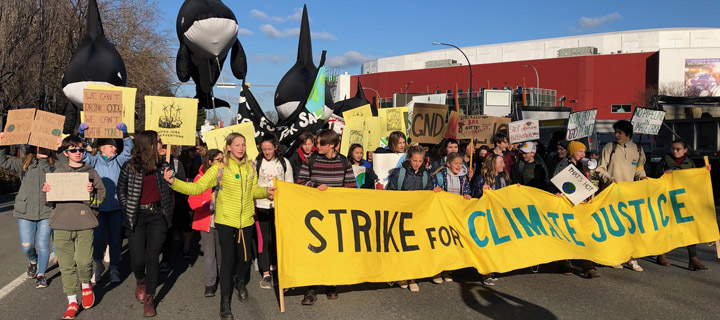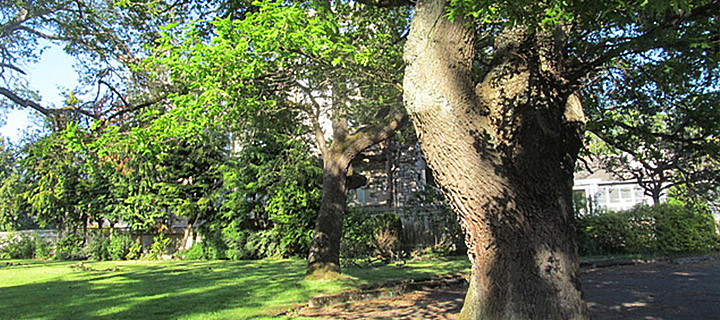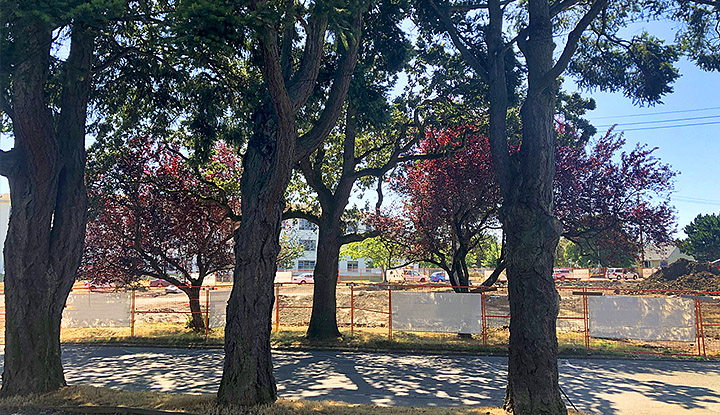Standing Up For Trees
Want to know what you can do to protect and preserve trees? Here are some straightforward ways and resources to make a difference in your neighbourhood, including sample letters to write, how to approach local media and municipal authorities, resources, neighbourhood associations and groups, and handy email addresses for sending letters.

Comment sections in online newspaper or magazine articles
Many people read these (unless there are 300 comments on one article!). It’s a great place to share information or a point of view that hasn’t been included in the article.
Be quick to comment. The older the article is, the fewer the people who will still read it. However, the article remains online and will still be seen, along with your comments, if people search for that topic.
Be prepared that some people may post ignorant responses to your comment. Don’t get into an online argument. Don’t waste your time, don’t take it personally. If they bring up a legitimate point you wish to clarify or add to, respond only to that.
Keep words and sentences short. It is harder for readers to comprehend long words or phrases online.
Keep your posts short and factual. Don’t share personal information.
The Vancouver Sun comment guidelines are good overall rules for commenting online.

Op-eds, or opinion editorials
Think of media outlets as allies. They need stories and you have a story to tell.
Op-eds allow a longer length than letters to the editor. (In Victoria’s Times Colonist, it’s 500 to 750 words. In Vic News, 300 words. The Vancouver Sun’s commentaries are 600 up to a rare maximum of 1100 words.
These must be well-written. It also helps enormously if you are an expert in the field you’re writing about, or hold a position or experience very relevant to the subject of your opinion.
Times Colonist:
Times Colonist letter writing guidelines
letters@timescolonist.com
Submitting letters to Black Press publications:
“We’re always happy to receive letters and we do our best to run as many as we can. Letters run on Fridays and should discuss issues and stories that have been covered in the Victoria News.
Please keep letters to less than 300 words.
“Black Press Media reserves the right to edit letters for style, legality, length and taste.
Black Press Media will not print anonymous letters.
“Please enclose your phone number for verification of your letter’s authenticity and your municipality of residence. Phone numbers are not printed.”
editor@vicnews.com
editor@saanichnews.com
editor@oakbaynews.com
editor@goldstreamgazette.com
Mayor & Councillor Contacts
Writing a letter to voice your opinion is not only therapeutic but can make a difference. The more of us who do it, the more likely some action will come of it. We have conveniently compiled a list of emails for councillors and mayors for most municipalities, plus CRD directors.
Trees as a Legacy: Covenants and More
Conservation covenant expert and urban forest lobbyist, Lisa Gordon, shares how to protect and preserve trees on private land. Lisa has been involved her entire life in terrestrial conservation. She spent more than a decade at Islands Trust, a non-profit conservation organization on the west coast of British Columbia.
Lisa was responsible for facilitating dozens of conservation covenants with people on private land in the Gulf Islands.
Letters to the editor
Letters to the editor are one of the best-read sections of the newspaper! This makes them an ideal place to raise community awareness of issues. Politicians and government staff also read the newspapers.
- Jump in, and start writing your rough draft. At first, don’t worry about grammar, punctuation, or clarity. What is most important to you will become clearer as you write.
- Then go back and cut unnecessary words, phrases or ideas. Tighten sentences up. Make sure your argument is clear and logical.
- If possible, express yourself within one or two paragraphs. Short letters are more likely to be published, more likely to be read, and pack a stronger punch.

- For the best chance of publication, send a letter to the editor within a few days of the article you’re responding to.
- At the top, write the title of the article you’re responding to, e.g.: “Re: New Development Will Replace 50 Trees”. You can also respond to a previously published letter-to-the-editor in the same way.
- Don’t hold back. If possible, start right off with the strongest part of your argument. If you need to set the scene, do, but get to the point quickly. Newspapers sometimes cut letters to fit. If you end with your best sentence, it could get cut. Or the reader could lose interest before they get there. Start with your strongest sentence.
- Due to space limitations, try to stick to one main point. Save others for later letters.
- Send it in! Don’t take days or weeks trying to polish it to perfection. It won’t have a chance to make a difference if you never submit it.
- An arborist told me that in her experience, engineering departments don’t care about the trees or their value. So if you have an idea that could save trees, go ahead and communicate it. She said: “You need to show them a way to build their road and keep the trees. Basically you have to do their work for them.” True, you might receive criticism. But it might save the trees you’re fighting for, or could spark change later on.
- Most letters are published with a headline. Take a look at published letters in the newspaper you’re writing to. Try coming up with a lively headline for your own letter. They may not use it, but if it’s a good one, it helps your chances of getting published.
- If you are introducing an idea and have time to wait a few days, you will likely be able to edit your letter better on re-reading. However, a letter-writing buddy who can offer feedback before you send it is also invaluable. They will be able to see more clearly if your idea works and/or you have communicated it clearly.
- Make sure you know what the maximum word count is, and stay within it. (Check with your local paper. Many have a maximum of 250 words, but it can be less.) Every single word is counted, including ‘a’. If you go over the word count, they may cut your letter or edit it to fit. You may not like the way they do it.
- Responding to a recently published article probably offers the best chance to get your letter published. It’s best to respond within two or three days, but if it’s a really good letter on a highly relevant subject, it may still get published even if some time has lapsed.
- You can also introduce a topic that hasn’t been written about recently. It will still need to be timely and relevant in order to be published. Tie it to related current issues, if possible.
- Don’t be discouraged if your letter isn’t published! The editor will know that this topic is important to readers if they get more letters than they can publish. Don’t take it personally. Newspapers are going through tough times, and don’t have much room these days. Keep honing your skills, get feedback from your writing buddy, and keep writing!

- Sign with your name, municipality, and phone number. Some papers will allow you to use a pen-name, but they still want to know your real name. If you have a professional affiliation that is relevant to your letter, you can include that after your name, e.g. Jane Doe, Professor of Urban Forestry, University of Victoria; or John Doe, president, Victoria Ratepayers Association.
- Back up your point with facts.
- Most newspapers allow people to publish only one letter or op ed every 30 days. If you get one published, let us know! Then take a rest, or send to other newspapers for a few weeks.
Tips for influencing decision-makers (advocacy)
Learn about trees at risk in your neighborhood
- Find out about projects early – ideally before the signs go up
- Ask neighbours and neighbourhood association what they know
- Find out who is responsible – a private developer or a public agency
- Get the facts (e.g. arborists’s report) about the trees at risk
- Call or write to the project lead (developer or public agency) seeking info
- Get the formal plans from engineering or planning departments
- Refer to the municipal Tree Bylaw – available on municipal websites
- In Victoria, check the property address through the Development Tracker

How do I convey my concerns?
Start by calling or writing to the project owner or leader directly to get the full story.
Think of your elected officials as allies. You probably know more than they do about some issues. Elected people (esp. those in their first term) are usually grateful to learn from you what constituents are thinking / feeling. Be respectful and to-the-point about what the urgent need is and what you want them to do about it. It’s best if you can hook your request to something they are already working on (e.g., it’s in their strategic plan or was in their campaign platform). Present your message from an intention of wanting them to succeed; not fail. Don’t get discouraged if city votes go against trees. Keep educating the ones who voted against trees at every turn.
Call or write a letter to your Mayor and Council (See Victoria details below). Keep in mind that staff read the correspondence to politicians, and these are the same staff who draft policies and advise politicians on their decisions. If you do not ask for a response, they are not obligated to do so.
Make the effort to meet elected officials face-to-face, even if you didn’t vote for them. Take a picture of the meeting and tag them on social media with a positive message.
Find out when the public can speak at City Council and when the public hearing is for this development. Sign up well in advance and get your neighbours to sign up too. A long line of speakers is always impressive. Prepare your 3-5 minute talk, practice it and speak about your concerns from your own experience. (Link the trees to the climate crisis and other big news, not just local concerns.) Inform your neighborhood association.

Victoria: contact your Community Association Land Use Committee (CALUC) available through your neighborhood association or community centre. Let CALUC know about your concerns and ask if and when a public meeting will be happening.
Victoria Community Associations (click to expand)
Fernwood Community Association – president@thefca.ca
North Park Neighbourhood Association – board@npna.ca
Rockland Neighbourhood Association – environment@rockland.bc.ca
Fairfield Gonzales Community Association – president@fairfieldcommunity.ca
Burnside Gorge Community Association – info@burnsidegorge.ca
Oaklands Community Association – board@oaklandsca.com
Hillside Quadra Neighbourhood Association – nag@quadravillagecc.com
James Bay Neighbourhood Association – jbna@vcn.bc.ca
Victoria Downtown Resident’s Association – president@victoriadra.ca
North Jubilee Neighbourhood Association – njnacommunity@gmail.com
South Jubilee Neighbourhood Association – board@southjubilee.ca
Victoria Correspondence Policy (click to expand)
When you email anyone with a victoria.ca address, it immediately becomes public record. It does not get added to a council agenda unless you take extra steps (listed below).
When you email mayorandcouncil@victoria.ca, the email automatically goes to each Councilor, Mayor Helps and key staff. Staff answer those emails on behalf of Mayor and Council and cc Mayor and Council on staff responses.
To contact a Councillor, email them at their individual email address. Councillors manage their own individual emails and responses to them. They don’t get staff support and don’t represent the whole council.
Emails about an address for development go on the Council Agenda for that development.
If the email does not name a particular development, it does not automatically go on the Council Agenda. Only Mayor and Council can add items to the Council agenda. You must ask a Councillor to request support for adding your topic to the agenda or you can request to speak at a Council meeting yourself (usually a few weeks in advance) and ask staff to add your document to the agenda with your talk.
Saanich: Saanich Community Associations
You’re not alone in your concerns. Tell your neighbours and friends. Partner with CTMN and other relevant community organizations
Take photographs, post them on social media and organize community meetings
More from the Toolkit
Why We Love Trees
Trees offer a multitude of benefits that many of us take for granted. Scientists are discovering that trees are far more sophisticated and valuable as a living resource than we ever imagined.
Tree Planting, Care, & Preservation
A recent study stated that planting trees (and preventing deforestation) is by far the best way to help mitigate climate change. Both new and mature trees require some care and attention. Learn what is required for trees to survive and thrive at all stages of their lives.

